Why you can trust TechRadar
We spend hours testing every product or service we review, so you can be sure you’re buying the best. Find out more about how we test.
Jira Service Desk is an IT support platform from Atlassian. It has now evolved into Jira Service Management. This software serves as a hub for customers and employees to report issues, request help, and access knowledge articles through a simple portal. Atlassian created it in 2013 after discovering that about 40% of their customers used Jira for service requests. In 2020, they expanded it into a separate suite with lots of new features
With Jira Service Management, you can manage and track incoming requests from many sources. These include email, chat tools like Slack and Microsoft Teams, and customizable customer portals. The platform organizes tickets into queues, sets up automated workflows, and establishes Service Level Agreements (SLAs) for timely responses. This helps your team prioritize work, reduce manual effort, and ensure important issues are addressed.
Jira Service Management is great for IT departments, but it also supports HR, legal, and finance teams. Over 5,900 companies worldwide use the software, mainly in the United States and the United Kingdom. It’s popular among medium-sized businesses with 50-200 employees, but it also serves startups and large enterprises. The platform’s customizable templates and automation make it easy to adapt to each team’s needs without extensive setup.
As a technically-minded help desk tool, Jira offers real-time reporting and analytics to track performance metrics like resolution time and customer satisfaction. Its knowledge base integration provides self-service options, allowing customers to find answers on their own. Whether you manage internal tech support or customer service, Jira’s tools help you deliver great service experiences.
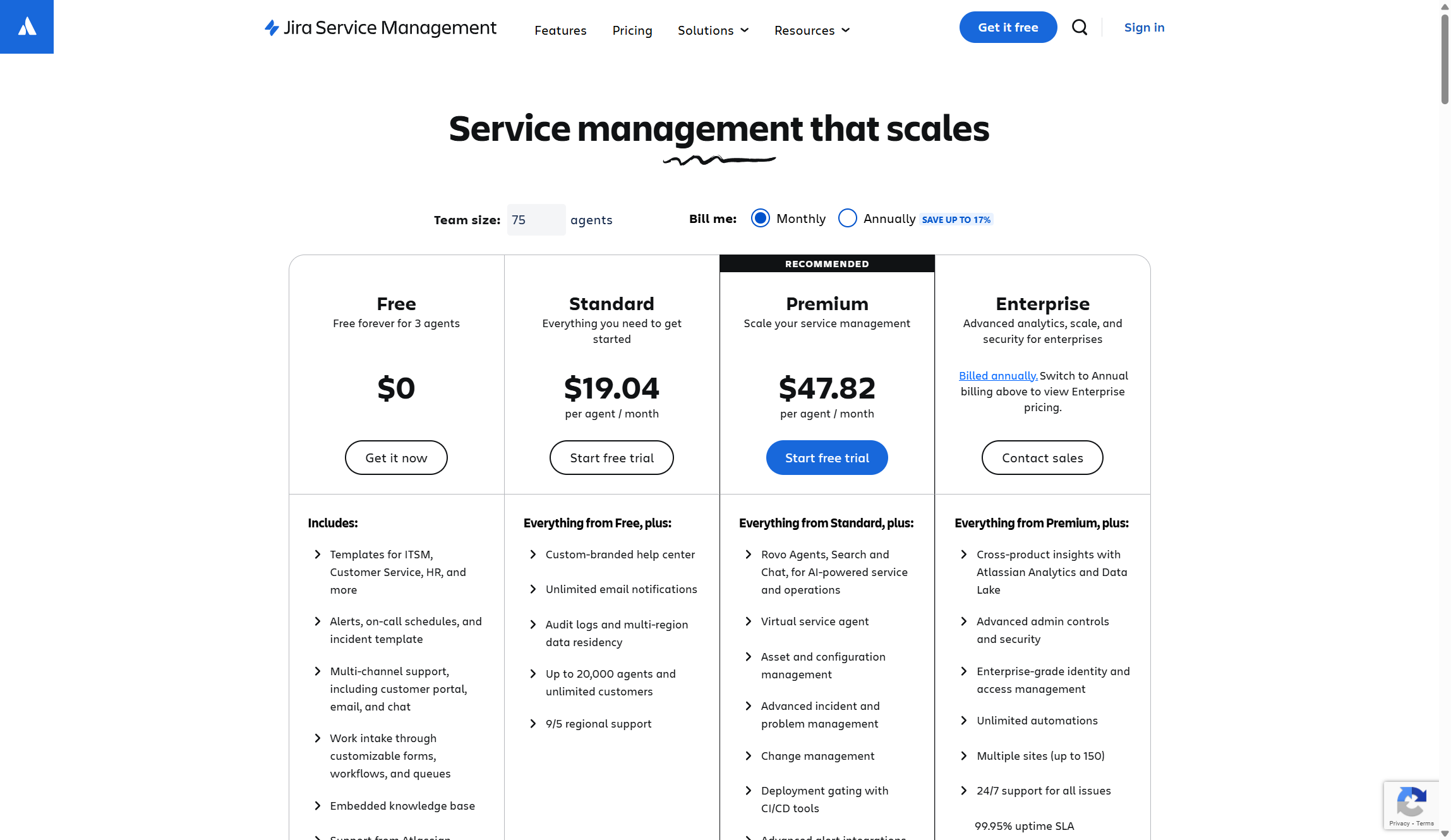
Jira Service Management: Plans and pricing
Jira Service Management has a tiered pricing structure for all organizations, from small teams to large enterprises. It offers four main plans: Free, Standard, Premium, and Enterprise. Each plan provides more functionality and support than the last.
The Free plan costs $0 per agent per month. It supports up to three agents with 2GB of storage. This plan is great for small teams or those testing the platform. It includes multi-channel support, customizable forms, workflows, queues, an embedded knowledge base, and incident and problem management.
The Standard plan costs $17.65 per agent per month (or $19.04 for 75 users). It includes everything in the Free plan along with a custom-branded help center, alerts, on-call schedules, incident escalation, unlimited email notifications, audit logs, and multi-region data residency. This plan supports up to 20,000 agents and unlimited customers, making it ideal for growing organizations.
For teams needing advanced features, the Premium plan costs $44.27 per agent per month (or $47.82 for 75 users). It adds AI-powered service, a virtual agent for support, asset and configuration management, deployment gating with CI/CD tools, advanced alert integrations, real-time incident monitoring, and a 99.9% uptime SLA.
The Enterprise plan requires contacting sales for pricing. It offers the most features, including cross-product insights with Atlassian Analytics and Data Lake, advanced admin controls, enterprise-grade identity and access management, unlimited automations, multiple instances (up to 150), and a 99.95% uptime SLA.
Jira’s ITSM has both monthly and annual billing options. The annual plan provides cost savings of up to 17%. For those wanting to try paid plans, Atlassian offers a 7-day free trial for the Standard or Premium plans. You can extend this to a maximum of 30 days upon request. This flexible pricing structure helps organizations choose a plan that fits their needs and budget while supporting growth as requirements change.
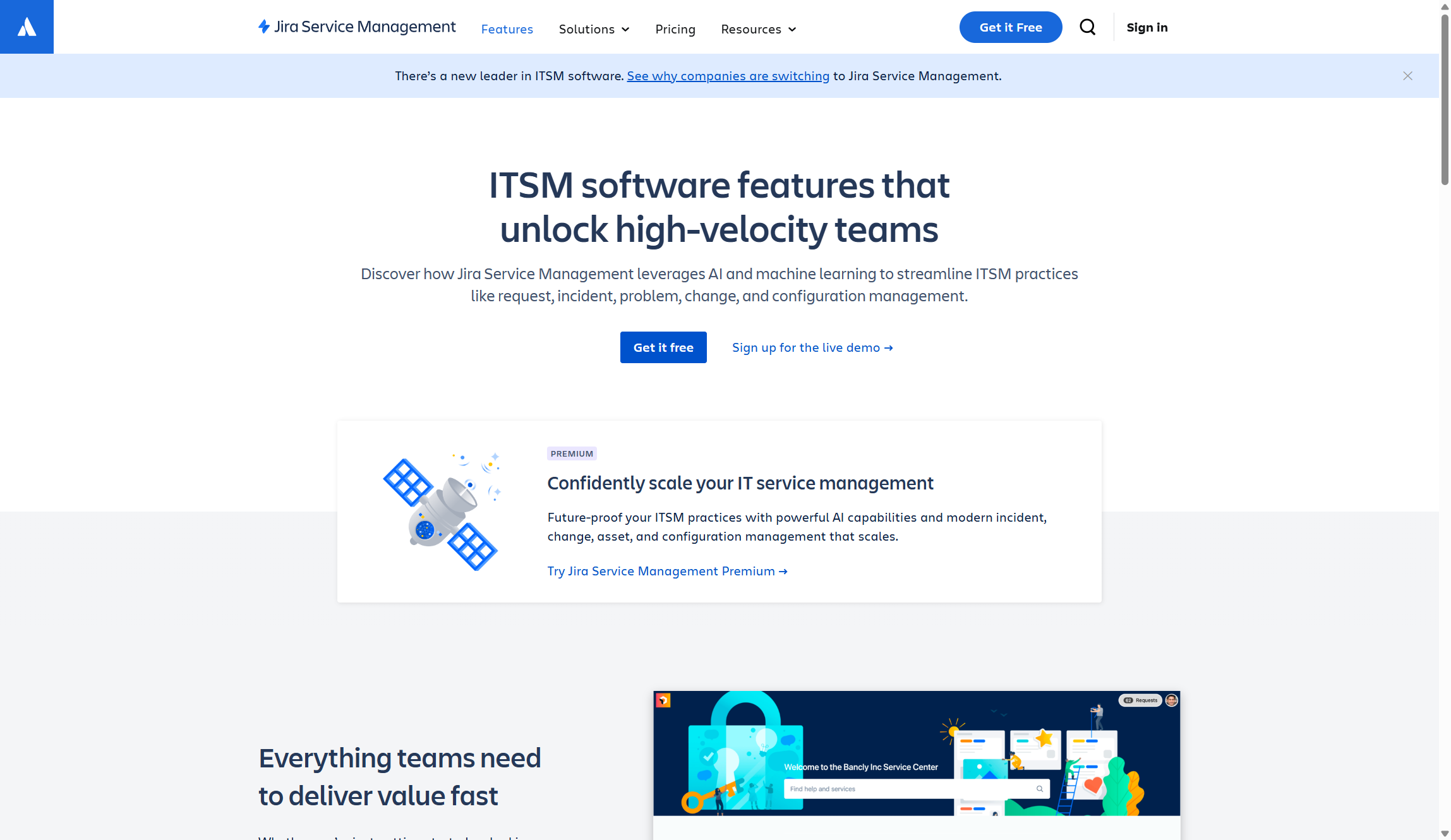
Jira Service Management: Features
Jira Service Desk, now called Jira Service Management, offers a full range of features for managing service requests. It combines ticketing, automation, knowledge management, and reporting tools, helping teams provide excellent service. Since its evolution into Jira Service Management in 2020, the platform has added many advanced ITSM capabilities for IT, HR, legal, finance, and other service teams.
Jira serves as a central hub for managing requests from various channels. Your users can submit requests via email, chat tools like Slack and Microsoft Teams, or through customizable portals. Meanwhile, you can set up custom workflows and automation rules tailored to their needs. Whether handling simple support tickets or complex change requests, Jira Service Management offers the tools needed to standardize and optimize service delivery.
Service hub
The service portal is the main contact point where customers and employees can ask for help. This customizable interface offers a straightforward way to submit requests, track their status, and access self-service resources. Organizations can adjust the portal to highlight different services, making it easy for users to find the right request type and get assistance quickly.
With a well-designed service portal, your team can reduce the time that users spend looking for help. Guided forms enhance request accuracy, leading to a better service experience. The global Help Center allows users to search across all service desks they can access, with machine learning improving search results based on past interactions.
Request management
Jira’s request management features allow teams to collect requests from various sources into organized queues. Teams can classify service requests, incidents, problems, and changes, directing them to the right agents based on expertise or workload. The platform also enables cross-team collaboration, allowing requests to move easily between projects.
This structured approach helps organizations standardize service delivery and reduce response times. By managing requests effectively, teams can prioritize their work, balance workloads, and boost both employee productivity and customer satisfaction.
Self-Service knowledge base
The self-service knowledge base works with Confluence, letting organizations create and share articles, guides, and FAQs. As customers enter requests into the portal, the system suggests relevant knowledge articles that may help before they submit a ticket.
All of this cuts down on repetitive requests, allowing service teams to focus on complex issues. In the meantime, organizations can measure the effectiveness of their knowledge base through different metrics and user feedback, continuously improving content.
Service level agreements (SLAs)
SLA management features let teams create and track service agreements. They can set multiple SLA policies based on severity levels, issue types, and other factors. This helps teams monitor deadlines and prioritize requests, using automated escalation rules to avoid breaches.
By managing SLAs well, your support team can ensure consistent service delivery and meet customer expectations. Different reports also provide insights into team performance and service quality. This helps managers identify bottlenecks, allocate resources better, and maintain compliance with service commitments.
Automation
Jira Service Management’s automation features help teams simplify repetitive tasks like ticket creation, routing, and notifications. A no-code automation builder allows teams to create custom rules and workflows without needing technical expertise, making it easy for all service teams to use.
By automating routine tasks, organizations can cut down on manual effort, reduce errors, and speed up response times. This boosts team efficiency and improves the customer experience through faster, more reliable service. Automation also standardizes processes across teams, ensuring that all requests adhere to established best practices and compliance standards.
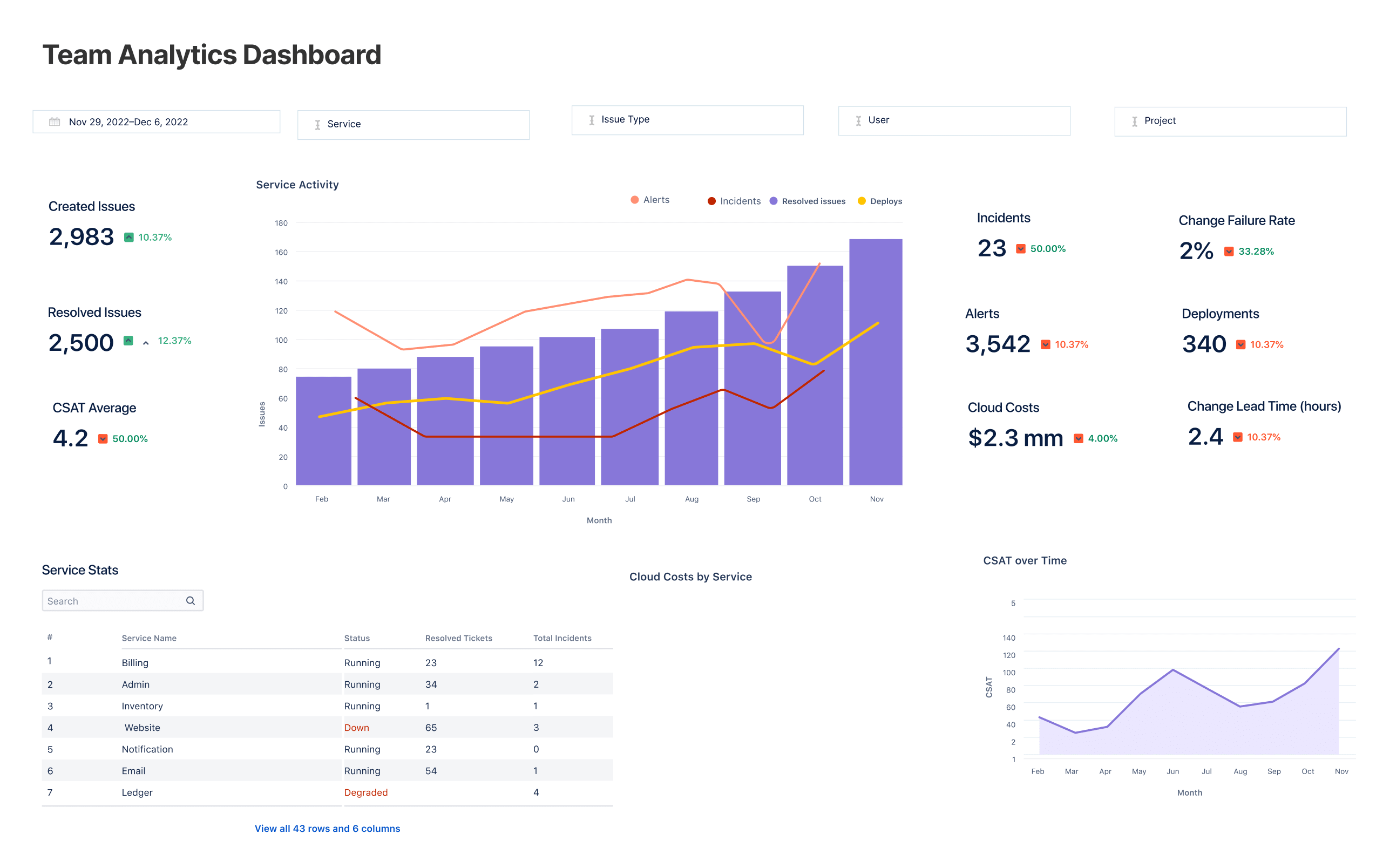
Jira Service Management: Analytics
Jira Service Management provides a full set of analytics tools to help teams make data-driven choices and improve service delivery. The platform features ready-made dashboards that track request management, incidents, changes, and service performance. This gives teams quick insights into their operations. With pre-configured reports, service teams can monitor key metrics like average resolution time, SLA compliance, and CSAT easily.
For organizations that need deeper insights, Atlassian Analytics (for Cloud Enterprise customers) offers a flexible way to visualize data from Atlassian products and other sources. Built on the Atlassian Data Lake, it combines data from development and operations tools. It gives teams a complete view of the work happening across support, development, and IT. The interactive visualSQL builder helps teams create custom reports and dashboards that fit their needs, leading to richer insights and faster decision-making.
Jira Service Management’s reporting also covers areas like asset management. Here, teams can analyze their objects and data stored in Assets. These reports provide key insights for inventory management, lifecycle management, and employee productivity. The platform includes service project reports that help teams track trends in their projects, such as workload distribution, customer satisfaction ratings, and knowledge base effectiveness.
Real-time reporting is a key feature of Jira Service Management’s analytics. It allows teams to spot and fix bottlenecks quickly, make better decisions on resource allocation and staffing, and monitor the business’s status. The platform’s dashboards can be customized for different stakeholders and embedded in Confluence pages, Atlas tickets, and Trello cards. This makes it easy to share information with various audiences.
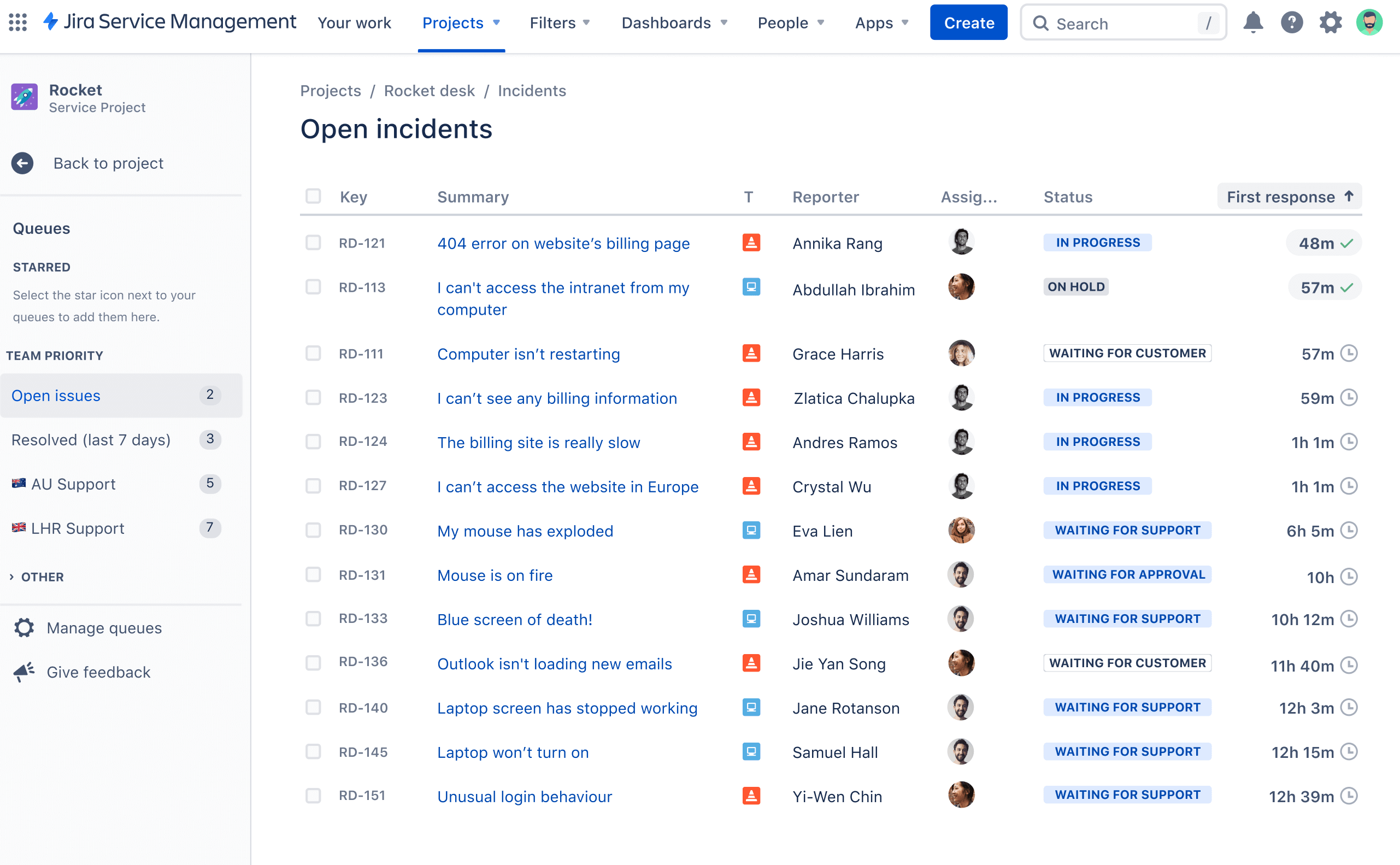
Jira Service Management: Ease of use
Jira has a very clean and attractive interface that takes the well-worn path of having hierarchical menus on the left and the contents on the right. It’s generally very easy to follow, even if those who aren’t familiar with it might encounter a few idiosyncrasies here and there.
However, working with Jira Service Management, you will occasionally need to access settings or features that exist as part of the larger service called Jira Cloud. But these can take you to a web page where there is no obvious way back to the top-level menu, disrupting the workflow. These other sections can also have a very different visual style, confusing new users.
Still, we appreciate how the administration login allows the look and feel of the product to be changed — adding colours, logos, and icons to fit whatever style your company uses. Jira’s interface is nothing revolutionary, but it gets the job done.
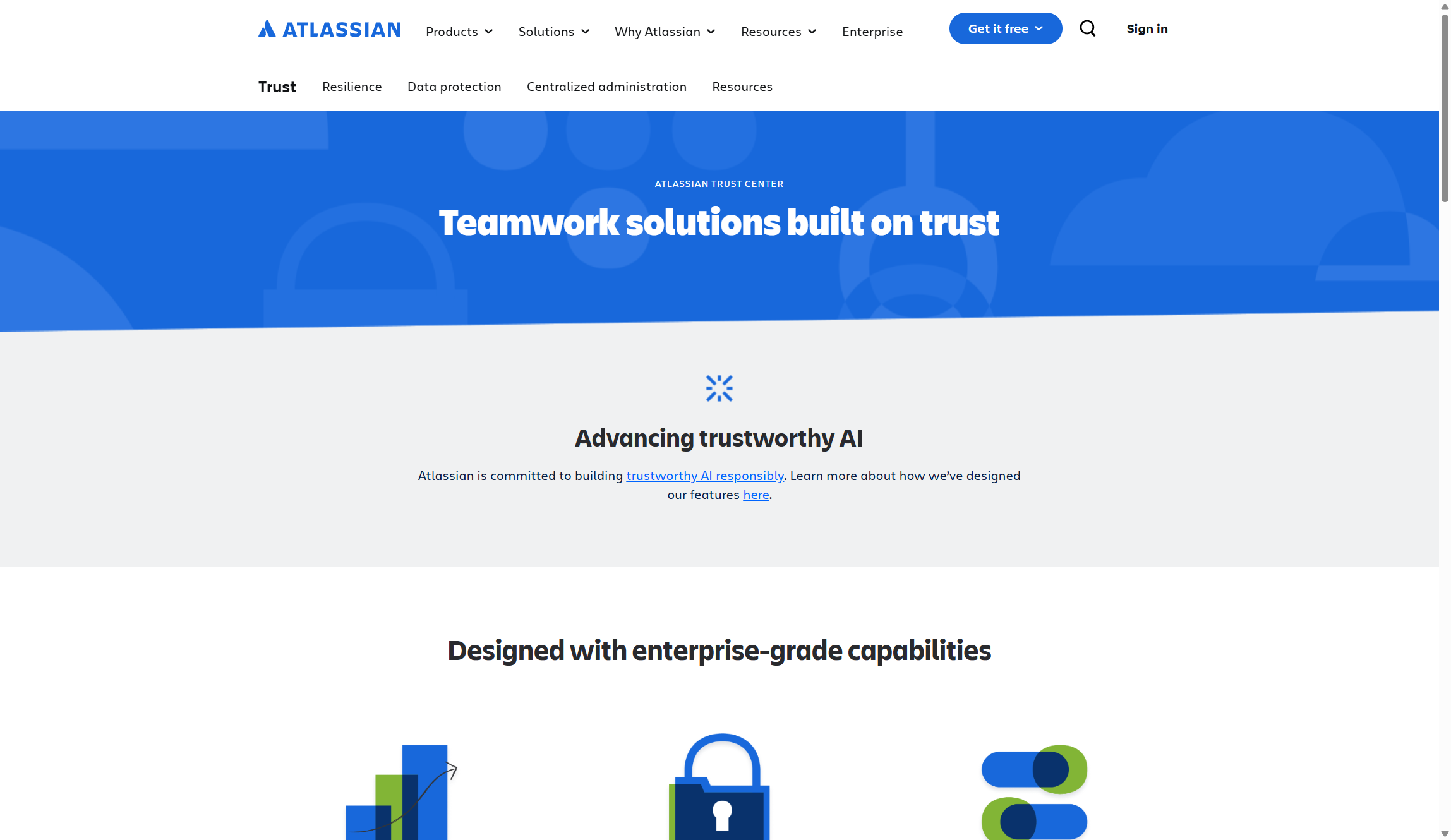
Jira Service Management: Security
When anyone assesses security, they have a list of features that they’d like to see offered. As an ITSM platform, Jira Service desk has most of those important features covered. However, what you don’t get is SAML single sign-on, 2-step verification, password policies, and user provisioning as standard.
To get any of those, you need a license subscription to Atlassian Access. It costs $30 per month for the first 10 users, then it works out at around $3/agent. This service controls access and security across all the Atlassian Cloud services, plus it can be linked to Okta, Idaptive, Google Cloud Identity, Azure AD, Onelogin and ADFS.
There aren’t any tiers separating the enterprise-grade security controls of Atlassian Access. So, you are forced to pay for the entire suite of security upgrades even if you only want 2FA. This adds more complexity to scaling the solution, because the costs can add up quickly as you expand.
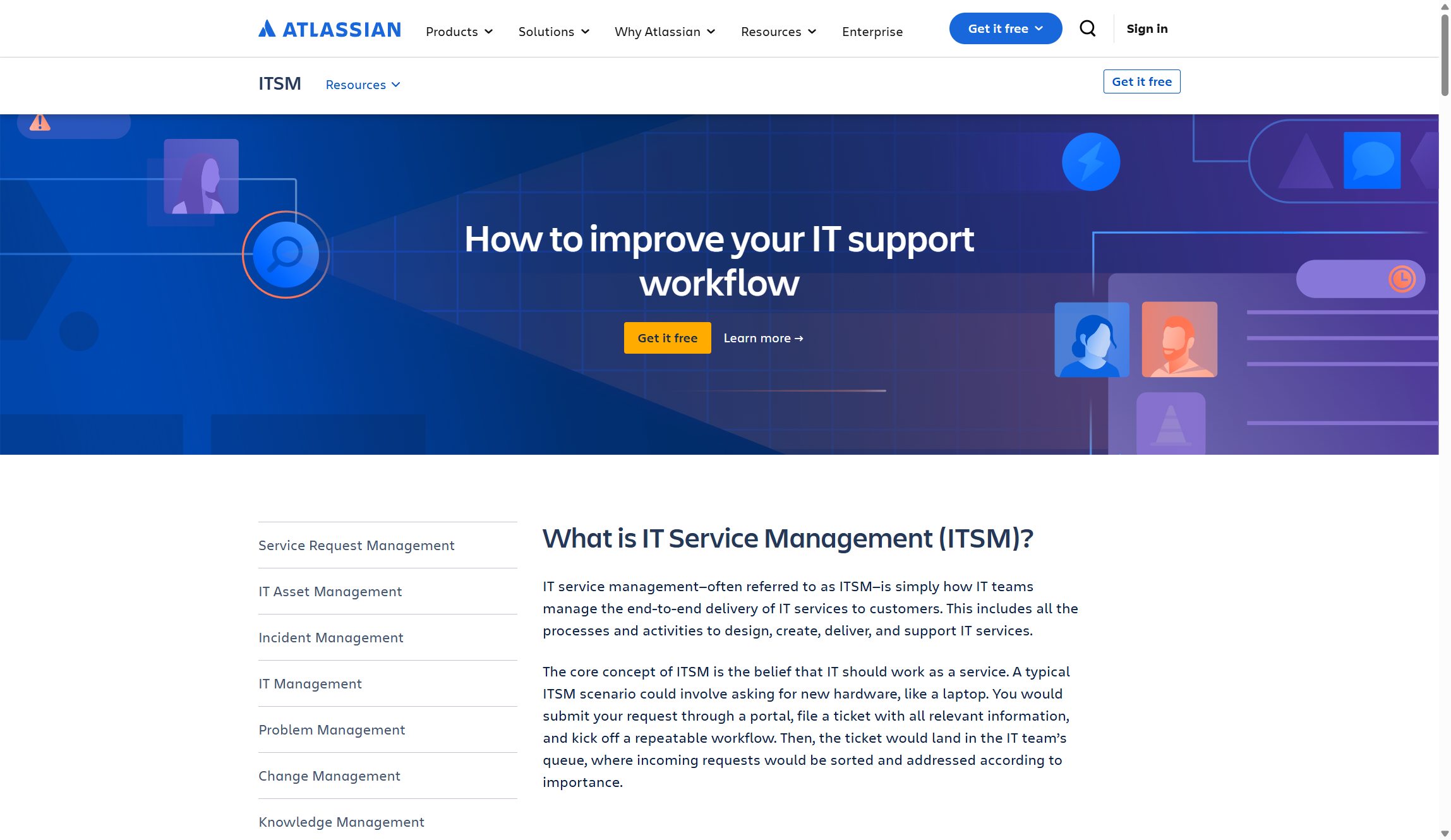
Jira Service Management: Support
Much like other Atlassian products, Jira Service Management offers different levels of customer support based on the selected plan.
The Free plan provides basic support via the Atlassian Community. Users can ask questions and receive help from other users and Atlassian experts. This community support is good for teams with simple needs or those just starting with the platform.
Standard plan subscribers enjoy 9/5 regional support. This means support is available from 8 AM to 5 PM, Monday to Friday, in the customer’s local timezone. Initial response times are 2 business hours for critical “Application Down” issues, 6 business hours for serious degradation issues, 1 business day for moderate issues, and 2 business days for low-impact inquiries.
Premium plan customers get enhanced support with 24/7 coverage for high-impact issues. Critical issues receive a response within 1 hour. This level of support is vital for organizations that depend on Jira Service Management and cannot afford extended downtime.
The Enterprise plan provides the most comprehensive support. It includes 24/7 help for all technical issues, a dedicated senior support team, and the fastest response times (30 minutes for critical issues). Enterprise customers also have a dedicated phone support number. They benefit from named contacts who can reach Atlassian’s top engineers directly, ensuring expert assistance is readily available.
Atlassian’s support covers incident assistance, root cause analysis, help with installation and upgrades, bug reporting, implementation guidance, and integration support with other Atlassian products. However, support does not cover end-of-life or beta releases, customized versions, development questions, third-party integrations, end-user support, product training, or system performance tuning. For these needs, customers should reach out to the Atlassian Community or contact Atlassian Partners who offer various additional services.
Jira Service Management: The Competition
ServiceNow is the main competitor of Jira Service Management, especially for large organizations requiring extensive ITIL. But, Jira Service Management connects well with Atlassian’s tools with a lower starting price.
Freshservice is a user-friendly option with an easy-to-use interface. It requires less time to set up, while still covering key areas like incident management and change management at a competitive price.
Finally, Zendesk Service is a strong choice for companies focused on customer support only. It excels in omnichannel support, helping manage customer interactions via email, chat, phone, and social media.
For smaller teams or those on a tight budget, options like osTicket or Zoho Desk might also offer affordable solutions. These platforms provide basic ticketing and support at a lower cost, but they don’t benefit from the same advanced automation and reporting features.
Jira Service Management: Final Verdict
Despite a convoluted pricing structure, Jira users typically swear by its ITSM platform thanks to its strong feature set and seamless integation. Still, we’d recommend proper cost planning before you deploy any time and resources into implementing this suite.
For those looking to use other Jira/Atlassian products and services, Jira Service Management is the obvious choice since it interlocks with Confluence and Jira Core perfectly.
Even when used in isolation, this is still a decent solution that’s reasonably priced for a standalone tool. But you don’t get to reap the benefits of integrating with other Atlassian products. Plus, there are cheaper solutions in the market if that’s all you’re looking for.
Check out our list of the best IT management tools.







Leave a Comment
Your email address will not be published. Required fields are marked *